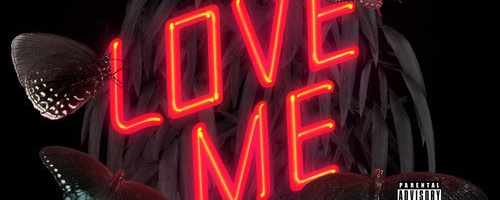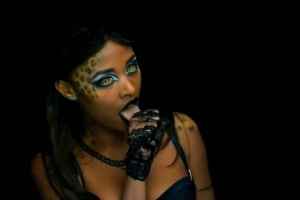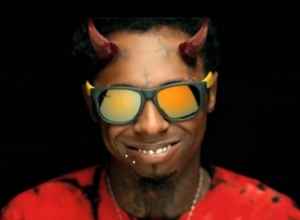Love Me and Duality

Within 30 years, from conception to present day, hip-hop has transformed in such varied ways that the common narrative of hip-hop being dead is more a mark against the speaker rather than an indictment of the genre. With that in mind, however, one cannot assess hip-hop and turn a blind eye to the disturbing amount of flaws inherent in the culture. Hip-hop remains one of the few bastions in the culture of America that not only condones homophobia and sexism, but ties the propagation of such traits to the core and value of an artist. Only in hip-hop is it more controversial that Nicki Minaj glorifies her sexuality than Trick Trick proudly proclaiming, “I don’t like [homosexuality]. Carry that shit somewhere else. It gets worse. It’s just that every time that you turn on the TV, that sissy shit is on.” with nary a mention in the general populous. Hip-hop as a genre is one where elitists can be conservative on sex and gender politics and yet liberal on everything else. This duality in hip-hop is on full display in the song “Love Me” by Lil Wayne, an artist who was(only after being usurped by his protege Drake) somehow the most hated and most listened to artist in the genre. Within the song “Love Me,” is a brief capsule of the dynamics of duality of self in hip-hop.
Overview (Video v.s. Song)
Listening to the song by itself, the composition leaves a lot to be desired. The make up of song is an atonal mess. The lyrics by themselves, don’t really raise an eye anymore in hip-hop. It’s vainglorious swag rap on a slow trap beat. The men show up, play their roles, and collect their checks.The beat begins with a plodding, bordering on lazy, mix of synthesizers layered in the background. After the beat drops, it plods along with 808 drums and synthesizer organs. It varies at the final third, where it drops down to just drums in the foreground, and Lil Wayne uses this part to add in an additional bridge. It’s not a stretch to say this is one of the worst beats that prolific producer MikeWillMadeIt has ever made.
The music video is a horror show when analyzed. This is not an indictment of the quality of the video, which is poor, but more to the darker hues, the greasy and dirty backgrounds. It’s similar to grindhouse, but much, much too polished. The main sections to note are Lil Wayne in bed with women, Future in a boiler room/torture chamber with women, the foreground that wouldn’t look out of place in the nightmare sections of Nightmare on Elm Street, and the sections with a person alone in a black room. Lighting wise, the video is, for the most part, murkily lit. The color scheme of the video is orange and blue, a popular contrast often seen in action movie posters. The editing of the video is something to note as the video uses a lot of slow down effects a la 300 along with fade ins and fade outs as the transitions. The video serves as the point where contradictions arise in this song most chiefly, the roles of the individuals and their identities.
Who is Drake?
Of the many artists to take up the role as “leader of the new school” in hip-hop, none seized the role as willingly and effectively as Drake. As an artist, Drake has long been viewed as a cocky upstart. From his meteoric rise to fame, Drake, unlike so many of his contemporaries, remains a chart topping artist. When Drake appears on a song, it’s no small gift. For many musicians, having the artist with the most number one hits in the genre is less of a small gift and more of a boon. Drake knows this and doesn’t collaborate with just anyone. His appearance on this song with his label-mate Lil Wayne could be seen as just another write-off appearance.
The duality of Drake is one of the most contested things about Drake as an artist. Before being signed to Young Money, Drake was more laid back, not necessarily socially conscious in the sense of Talib Kweli or Mos Def, but more in the realm of Kanye. Referring to his mixtape October’s Very Own, Drake’s subject matter isn’t addressing the world at large, or even the troubles of his hometown. His songs focused more on dealing with heartbreak, dealing with relationships, and handling the weight of friendships and relationships while pursuing personal endeavors. It was this marked uniqueness in subject matter that drew a lot of his early buzz. Add in the composition he used, which, while simple, hadn’t been used to such an extent. By mixing in his harmonies that he sung, by softening his voice, he came across as more emotional and vulnerable, which in the eyes of some in the hip-hop community is a travesty. He wore this controversy as a badge of honor, and in his wake numerous artists proceeded to mimic (read as: outright rip off) his style. After he was signed however, there was notable shift not just in his character, but in his tone as well. Drake began doing more and more ego rap which contrasted his style quite harshly. To be frank, Drake from “ The Calm” and “Fear,” while he is communicating similar messages as “Started from the Bottom” and “Headlines,” comes across as much more sincere. This is also seen in his recent album production as compared with his mixtapes. His mixtapes are still viewed as much more sincere and credible than his album verses.
Drake’s role in “Love Me” is singing the hook. In one of his less impressive showings, his voice doesn’t communicate much emotion. In fact, one could posit, Drake sounds, bored singing his section. The lyrics he sings are,
Long as my bitches love me
I could give a fuck about these niggas
which is repeated with Future, ad-libbing in the background until Lil Wayne begins a verse. An interesting feature of the music video is that Drake has no interaction with any of the women in the video. He is spliced over some, but he has no direct contact with women in the video. This makes his lyrics ring a curious note. It belies a reliance that isn’t at all mutual; his dependency on the women is one-sided. When viewing other works by Drake, most prominently “Marvin’s Room,” which is used by many as an indictment of Drake’s sudden”I could care less about women” attitude, it raises a lot of questions over the legitimacy of his claims.
Also to note, after this song, Drake began to find himself drawing a lot more negative attention from fellow rappers such as Common and Pusha T. This is usually assigned to his behavior of dissing people without addressing them by name, or “sneak dissing.” In recent months, Drake has started to directly confront people who challenge him, which, when looking back on this song and recent stories concerning Drake’s love life, seem to lend credence to the idea that he is quite dependent on the women in his life to keep him from behaving irrationally.
Future: Morality and Pets
Future, when this song was released, wasn’t just a relative newcomer, he was viewed as a poor knockoff of T-Pain. This view of him was tied not just to his gratuitous usage of AutoTune, but his frankly poor use of the medium. Even today, many are befuddled by the success of an artist who doesn’t so much as sing as he yelps. His rapping leaves many reviewers scratching their head in confusion, what’s more is his subject matter, unlike Drake’s, isn’t anything new. In fact, the success of Future, is more laudable in the fact that it has few ways of being traced to any regular reasons. His fame seems to be garnered out of cathartic release rather than actual talent.
As to his role in the song, Future, sings the bridge. Looking at the lyrics:
I’m on that good kush and alcohol
I got some down bitches I can call
I don’t know what I would do without y’all
I’mma ball till the day I fall

Future just seems to be musing on the day in the life of a successful rapper. Drawing attention to the lines, “I got some down bitches, I can call\ I don’t know what I would do without y’all\” there is an implied dependency on the women. More than that, looking at the video, Future is the first person seen, and he is alone in a black room as he sings the bridge. As the video goes on, unlike Drake, Future is seen with women, indeed, draped with them, but unlike Lil Wayne and many other rappers portrayed in similar scenarios, he doesn’t seem to be enjoying it. A very notable motif when viewing the video is the fact certain women are marked with animal traits, like a woman with cat ears and eyes, a lizard woman with a tail, etc. It lends itself to the interpretation that these women are viewed as predators. This is a curious dynamic to play with, especially towards the end of the video when the men are, for all intents and purposes, sated. Future is surrounded by four women who just escaped their cages, with another fast approaching him. Lil Wayne is tired and is laying in his bed layered with women at every conceivable point. If one plays with the idea of the women as predators, this could add the dynamic of the men viewing themselves as hapless creatures, controlled by their lust until that weakness is exploited by a woman, or women, looking to take advantage of him. This dynamic can be further examined with viewing Future’s reaction. During the song, he has very few scenes with anyone outside of a cage. When he is present, he’s standing with Drake and/or moving drearily with the beat. It’s only towards the end that the viewer sees him with women (animalistic or in some form of bondage) who aren’t in cages, and he wears a faint smile.
Lil Wayne: Ego and Hypersexuality
The dynamic of Lil Wayne’s character is and was solely based on the number of “bitches” and “haters” he has amassed and simultaneously doesn’t care about. Lil Wayne’s role in “Love Me” stands as paradoxically vulnerable and egotistical. This continues throughout the song. It creates a bit of cognitive dissonance, however, when Lil Wayne declares how little he cares for his haters and then proceeds to continually bring them up. Lil Wayne serves as the paragon of this feature of the song.
Beginning with his verses, Lil Wayne starts both verses with a declaration towards his “haters,” then follows up with an assertion of his sexual prowess. Verse 1 begins with,
Uh, pussy ass nigga stop hatin’
Lil Tunechi got that fire and these hoes love me like Satan, man.
Lil Wayne then goes on to assert some machismo with the lines,
Fuck with me and get bodied
And all she eat is dick, she’s on a strict diet, that’s my baby
The phrase, “that’s my baby” is worth analysis because within the first verse, Lil Wayne never refers to multiple women after it. Self contained, this is just Lil Wayne, bragging about a male fantasy, a woman who literally only exists to pleasure him and only him, but within the video, Lil Wayne is never seen with only one woman. He is also only shown in an aggressive manner when without women in the video.

Another point of analysis in the song is Lil Wayne’s smiling. There is a marked interest in the happiness of Lil Wayne in the video. Amongst the dim, grindcore elements of the video, Lil Wayne is jovial, to an outrageous degree. Outside of the breakdown near the end of the song, there are no scenes where Lil Wayne isn’t smiling. The breakdown serves to exacerbate the dynamic of the video. Contrasting the melancholic chorus and the dependency laced bridge, Lil Wayne is shown, blank faced and semi-serious as he states,
I lost a few good bitches
Met some more bad bitches
And I be schooling them niggas
Pose for your class picture
Now kiss my ass if you hating
I’m getting ass or I’m skating
Bitch
This only holds on the first repetition of the breakdown, however, as by the next repetition the beat has picked back up and the mood is restored to the previous campiness. What is of note here is Lil Wayne’s insistence on not caring for his women, nor about his detractors. It is very interesting as later in 2013, Lil Wayne would release, “Ghoulish,” which is considered by many to be the worst diss track ever. This was released in response to Pusha T’s “Exodus 23:1,” which was perceived as a direct diss to Lil Wayne and Drake. Again, similar to Drake, Lil Wayne’s armor sports quite a few chinks, when he is so easily frazzled by a “hater.” The narrative of the song rings hollow and false, but it is a facade all the actors feel they must keep up. Without the video, this song probably would’ve faded into the ether to be forgotten, but with the video, it serves as a snapshot of what the men featured really are. Fragile.
What do you think? Leave a comment.











First time listening to this song today since sometime last year, and idk why I stop listening to this..
the beat is amazing but the lyrics are just total crap, i wish they would make songs with this sound but with lyrics that mean something, besides sex…and drugs.
Bad beat, dull production and no lyrical interest whatsoever…
That’s an interesting position.
Really interesting analyses.
Thanks
All songs today are illuminati, satan, bitches, ass, smoking, and drinking.
Wayne sounds like a deflating balloon in this one.
It’s interesting to see your criticism of the song in regards to the song itself, as well as in the context of when the song was released and what it meant in the careers of the artists involved.
the video is scary and disturbing
An interesting and valid takedown of artists that are famous for unfathomable reasons. This was a good read.
I love this analysis of this song.
I wonder how much our formulations about the misogyny and sexism in hip-hop lack a critical eye towards the rationale behind the fantastical. There is a reason that black artists are fantasizing about money, cars, clothes, and beautiful women, it is because there are actual material deprivations in black communities. Yes, rap is in constant dialogue with the capitalist system, often promoting aspects of capitalism that have historically signaled a violence towards black people but we have to consider the source of that alignment with capital as partially linked to a kind of intimacy with death and deprivation.
Good analysis of the song!
A picture is worth a thousand words, so how many does a video hold? Good article!
This is a very interesting analysis. You should analyze more songs and music videos. I never thought about these things when I heard the song.